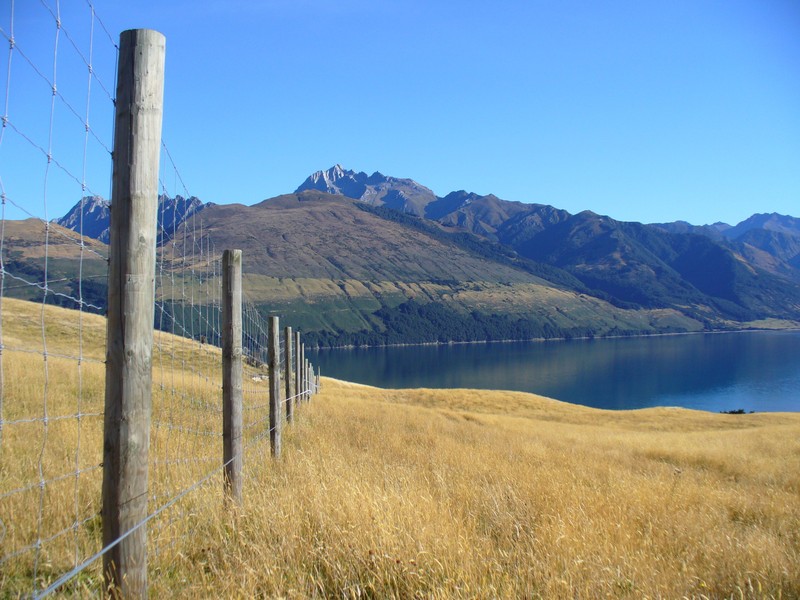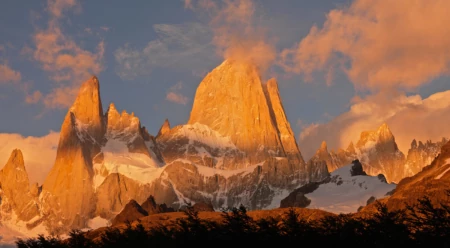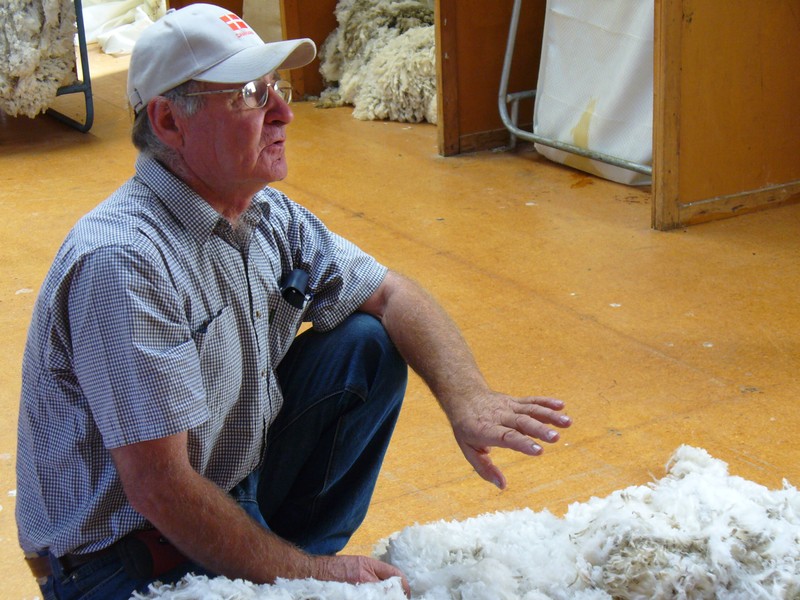Where Our Wool Comes From
The following report is brought to us by Ken Larussa, from our Reno Distribution Center, home of Patagonia’s Customer Service. If you’re a long-time customer, chances are good you’ve spoken to Ken at least once. After hearing about Ken’s trip and seeing his pictures, we’re lucky he came back.
Wool. We all know it comes from sheep and we all know that New Zealand is famous for
sheep. Since I was going to New Zealand anyway, I asked Tetsuya—who works in Fabric Development—if there was any way he could arrange a visit to Dingleburn Station, the place where the Merino wool we use for our new base-layer line comes from. A few emails back and forth and next thing I knew my brother, my girlfriend, and I were wandering around the Wanaka airport searching for someone with a small plane who looked like a sheep farmer.
It didn’t take long for Guy Mead, who does in fact look exactly like a sheep farmer, to walk up and ask if I was from Patagonia. Probably wasn’t too difficult since I was decked out head-to-toe in our stuff.
Guy’s 4-seater was a bit smaller than the Boeing 777 Kirsten and I flewin on, so it was with just a bit of trepidation that we hopped in forthe short flight out to his “station”—what New Zealanders andAustralians call large scale ranches. We buckled in and off we went.
[Photos: Top – Some of the grazing lands surrounding Dingleburn Station
Bottom – Guy Mead pilots the commute out to the Station. Thanks to Ken and Kirsten Mashinter for all the great photos.]
Tetsuya had warned me about the dirt road going into Dingleburn, so flying in and skipping all that was quite the coup. Not to mention the views. Looking down on Lake Hawea with views of Mt. Aspiring and the Southern Alps was a flight that might have made Frodo jealous.
We touched down in the middle of a paddock and hopped out. My first thought was that it’s got to be a great place to be a sheep. Sitting on the shores of Lake Hawea, complete with a river boasting brown and rainbow trout flowing right through his station, I was ready to move in.
The day we visited, most of the sheep were high up in the mountains, grazing on grasses untainted by chemical fertilizers of which Guy explained he had little use for in this part of New Zealand. I asked about organic wool and he said that the only thing that keeps his sheep from being organic is a stomach parasite in New Zealand that affects Merino sheep specifically (as opposed to the “Marino,” the rare touchdown-throwing variety from Miami).
This parasite necessitates bi-annual sheep dips to keep them healthy. He went on to say that he’s been working on a few things that he hopes will in the future allow him to forgo this treatment, and if it works, his sheep will surpass even the most stringent organic requirements. He then drove us around the station and explained how they move the sheep from area to area to prevent over-grazing. Many of the grazing areas were high up on the hillsides and it takes a lot of dogs and even the occasional helicopter to get the sheep to move along.
Our next stop was the shearing shed where the sheep get liberated of their wooly fleece. They’re sheared by itinerate professional shearers who work both the North and South island and can shear some 200 sheep a day. Merino sheep get sheared once a year
and produce about 4 kilos (8.8 lbs) of wool per shearing. They produce wool with a diameter of less than 18 microns, which means that the wool, even straight off the sheep, is incredibly soft. For comparison, most other breeds of sheep produce wool in the range of 25-38 microns.
For a sheep, Dingleburn Station would be a beautiful place to live out your days, but unfortunately, after 5 to 7 years the wool from Merino sheep starts to grow coarse, so the sheep are literally sold down the river where they continue to produce lesser quality wool for other suppliers.
Next, Guy brought us over to see some real, live sheep. The only sheep that weren’t high up on a hillside were the young rams that he needs to keep separated from the rest of the herd; I guess even in the sheep world, boys will be boys. It’s hard to say what was more interesting, watching one dog herd about two dozen sheep into the corner of a pen or watching Guy wrestle one to the ground so we could get a good look at him.
Dingleburn Station is a family operation, and no visit to a New Zealand family is complete without a visit to the home. Guy’s house is situated in a spot with million-dollar views overlooking the station and Lake Hawea. He brought us in for a “cuppa” (New Zealand catchall for a cup of coffee or tea) and some tasty muffins and shortbread that his wife Davida, who was off visiting one of their daughters, had baked up for us.
 Before we knew it, we were back at his plane, where Guy gently informed me that Dingleburn Station had no real use for a phone jockey. Sadly, I jumped back in the plane for another incredible flight back to the Wanaka Airport where we continued our trip to see the rest of the South Island.
Before we knew it, we were back at his plane, where Guy gently informed me that Dingleburn Station had no real use for a phone jockey. Sadly, I jumped back in the plane for another incredible flight back to the Wanaka Airport where we continued our trip to see the rest of the South Island.
[Photos, top to bottm: 1) Dingleburn Station’s waterfront property with views of New Zealand’s Southern Alps in the distance, 2) The residents, 3 & 4) Guy Mead giving a hands-on introduction to the quality of Dingleburn wool, 5) Why Ken Larussa wishes he was a sheep.]

